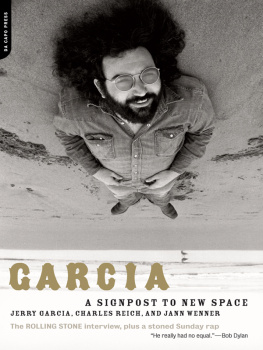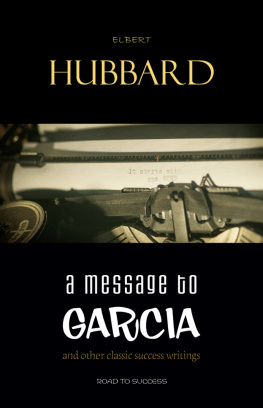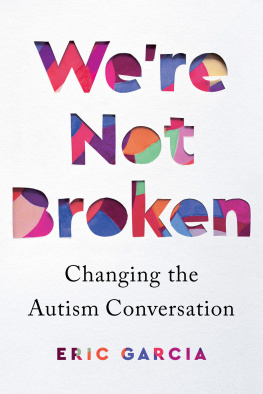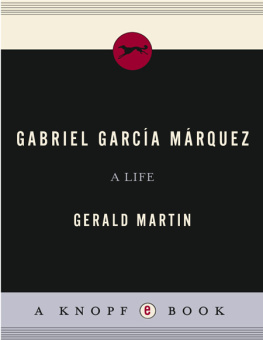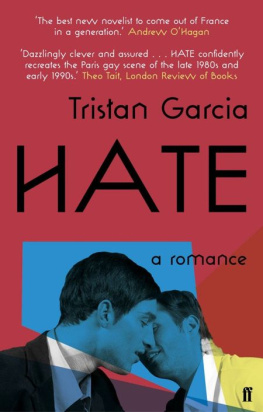All rights reserved. No part of this publication may be reproduced, stored in a retrieval system, or transmitted, in any form or by any means, electronic, mechanical, photocopying, recording, or otherwise, without the prior written permission of the publisher. Printed in the United States of America.
Cataloging-in-Publication data for this book is available from the Library of Congress.
Da Capo Press books are available at special discounts for bulk purchases in the U.S. by corporations, institutions, and other organizations. For more information, please contact the Special Markets Department at the Perseus Books Group, 11 Cambridge Center, Cambridge, MA 02142, or call (800) 255-1514 or (617) 252-5298, ore-mail special.
FOREWORD
T he Interview with Garcia was always one of the things I put off into some indefinite future. Jerry was always around and of course, wed do it sooner or later. But five years later? Garcia was one of the earliest and most enthusiastic admirers of the interview segments in Rolling Stone. He told me that after issue four.
What finally brought on the interview, at long last, was meeting Charles Reich, the Professor of Law from Yale who wrote TheGreening of America. I had never read that book and was skeptical about him or about anyonewho hadn't been around from the beginning explaining the new cultureconsciousness III as he called it.
Reich visited our offices in San Francisco in 1970. He said he had been turned on in 1967, during a summer in Berkeley, listening to a Jefferson Airplane album from a window as he was walking down Telegraph Avenue. After reading an interview with him that we published in Rolling Stone, I was amazed at how deep his understanding of rock and roll was and how solidly based his musical knowledge was. Reich knew what he was talking about. And it turned out he was a Grateful Dead freak.
He, too, hit me with the question: How come you haven't done an interview with Garcia?
No one else ever popped up who wanted to do the interview and it always waited on me. Perhaps the true reason was that I had lost touch with the Dead. When Charles Reich asked me the question, I hadn't really listened to a Grateful Dead album since their first one and only recently had Casey Jones slipped into my ears. After their first album, I was running some insane rock and roll newspaper and got into Otis Redding like mad. The Dead, as far as I could pick up, had gone psychedelic, which had begun to lose interest for me. I would see Jerry Garcia around in various scenes, wed yak, but... different places.
The truth of the matter is that I knew the Dead from when they were the Warlocks, I had known Jerry Garcia from the beginning of our careers in the San Francisco Scene. The first time I saw them... San Jose, after a Rolling Stones concert. I wandered into a Kesey scene there that turned out to be their first Acid Test. I remember asking someone (who turned out to be Phil Lesh) who they were. Were the Grateful Dead he said, and the impact, in my state of mind at that point, was severe.
Anyway, it took a professor from Yale to turn me on to the Dead again. He suggested that, together, we do an interview with Jerry: I'd do the major portions myself and hed come along and ask one or two questions of his own. Reich knew the lyrics and spoke intelligently about them; I knew their history. It would be a good combination, and God knows, Charles Conscious III Reich Meets Jerry Captain Trips Garcia might turn into something of its own. I called Garcia in the spring and told him what the shot was. Open and always amiable, he agreed.
In July, Reich was at our offices raring to go and to settle who was going to be certain the tape recorder was operating correctly (me). I gave Charles our files on the Dead, and ordered Anthem of theSun through American Beauty for myself from the local distributor that day. The next Saturday, I met Charles in his Avis sedan at a stopsign in one of Marin County's oceanside towns on the edge of Mount Tamalpais.
Garcia lives a suburban life with his old lady, Mountain Girl (once of the Merry Pranksters and a close friend of Kesey's in those days) and their two little girls. Their house is surrounded by seaswept eucalyptus trees, five-foot hedges and large rose bushes, beyond which is a magnificent view of the Pacific Ocean and the Far East, as far as the imagination can take you.
On the lawn that looks onto that magnificent view, Charles Reich, myself, Jerry Garcia and Mountain Girl sat on a sunny afternoon with the tape recorder turned on. Five hours later, I packed up the machine and headed back to the city, not entirely sure I could drive too well and not entirely sure at all what had just gone down. Charles Reich was wandering around somewhere in back of the house remarking on the vibrancy of the trees and Jerry had to be in Berkeley at 7:00 for a gig.
I had the transcripts of the tapes three weeks later. What happened was one interview that I did with Jerry, based in an old familiarity and best described as the good old Grateful Dead trip; and a whole other statement that Reich was looking for: Jerry Garcia as spokesman, teacher and philosopher. To be honest, there came a point in that afternoon where I sank into my chair with my hands over my face, wanting out of the whole proposition: Reich was asking questions I thought either achingly obvious or obviously unanswerable But Garcia had done his best to explain.
After reading the transcript of that session, Garcia's intricate and compassionate replies to Reich's questions and his easy reminiscences of scenes where I just prompted the memories, I felt we had come up with the remarkable. Reich asked what no hip sophisticate would ever have asked, and Jerrywithout hesitation or pretensiontried to answer it all.
A few weeks later, Reich went back to do another two hours on tape. A few months later I also returned to talk with Jerry for another four hours.
Charles Reich put it all into a rough chronological order and I edited it for publication. (He is identified as the interviewer in several passages where I felt it important to indicate the dialogue between the professor and the professional.) Almost half a year after the interview was published in Rolling Stone, Charles went back again, as he describes in his Introduction, for what turned out to be the Stoned Sunday Rap, published here for the first time. And thus we did, at long last, The Interview with Garcia.

